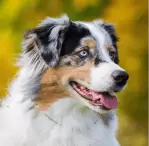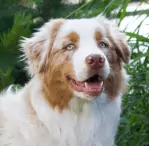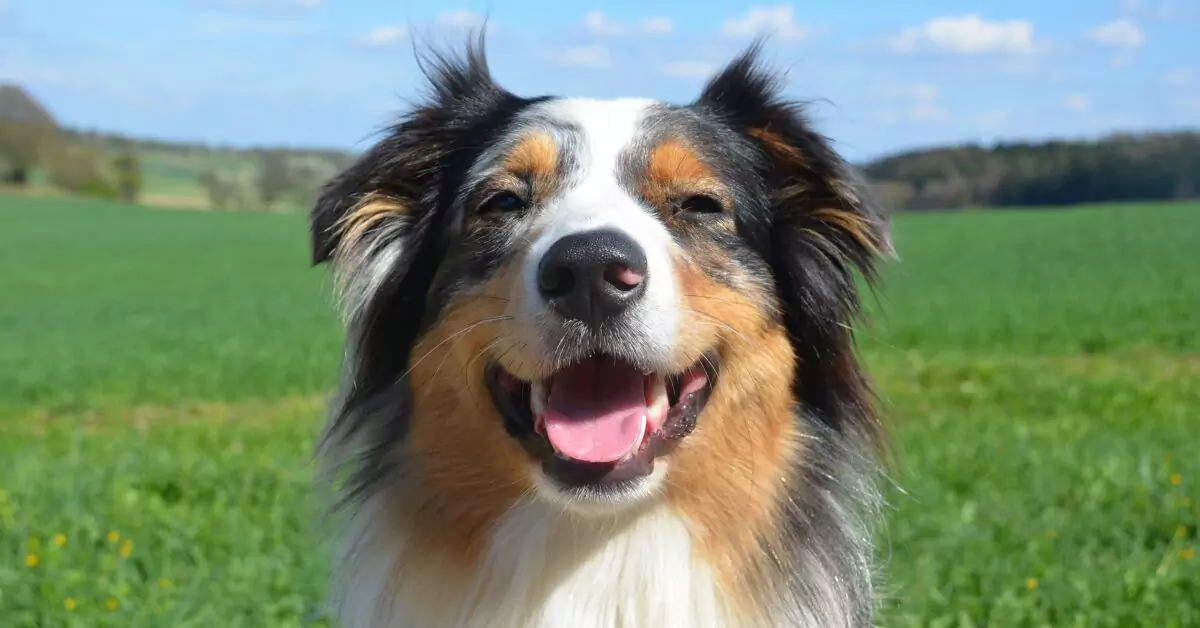
Meet the Australian Shepherd
High Doggy I.Q.
Top Working Dog
Best Fur Friend
My Many Looks
My Breed Characteristics
Furbulous Fact
As I Grow Up
History of My Breed
Care Tips
Training Tips
Personality
Intelligent
Loyal
Energetic
Group
Herding
Origin
United States
Life Span
12-15 Years
Breed Popularity
#12 of 195
Height Range
18-23 Inches
Weight Range
40-65 Pounds
Coat Details
Type
Straight to Wavy
Texture
Features
Colors
Black, Red, Blue Merle or Red Merle +/- White Markings and/or Tan Points
Hypoallergenic
Cost to Buy
$400-$1,500
Lifetime Care Cost
$22,810
My Many Looks
My Breed Characteristics
Furbulous Fact
As I Grow Up
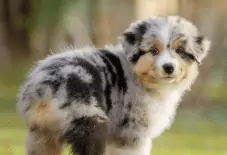
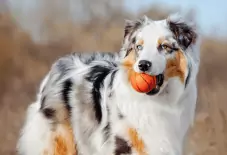

History of My Breed
Care Tips
from Dr. Jessica Greenberg, Associate VeterinarianConsider getting a DNA test for your new pet.
Talk to your vet about whether they recommend getting a DNA Test to check for potential hereditary conditions and breed-specific health issues. For example, the DNA test would check for a multidrug resistance gene mutation (MDR1) that causes many Aussies to have severe reactions to common medications (in addition to other things).
Get key health screenings your vet recommends.
In addition to yearly check-ups, vaccines and parasite prevention, ask your vet if your pet needs specific health screenings. For Australian Shepherds, this would likely include X-rays to screen for hip dysplasia and elbow dysplasia, along with a puppy eye exam (and regular eye exams moving forward) where a vet ophthalmologist would look at their overall eye health & development and check for signs of common genetic eye conditions, such as Distichia, Collie Eye Anomaly (CEA), and Cataracts.
Plan on AT LEAST 1-2 hours of exercise a day.
Aussies are a highly active, athletic breed that need a nutritious, well-balanced diet and plenty of physical activity to stay happy, healthy, and well-adjusted. A cooped-up Aussie can quickly turn into a bored, destructive Aussie. While it’s ideal to have a fenced-in yard where your pup can run and play, Aussies also do well with long walks, runs and hikes with their humans. They also LOVE task-driven sports, like flyball and agility training!
Training Tips
from Dr. Jessica Greenberg, Associate VeterinarianDon’t wait too long to socialize your pup.
Aussies are loyal and protective of their humans and turf, but can be weary and territorial around strangers if not properly socialized. As your pup is building up immunity during their initial vaccination series, you can start acclimating them to the outside world. At 16 weeks, your puppy will be vaccinated and ready to fully venture out. Whether you go to puppy classes, friends’ houses, or on walks down new streets, the more comfortable they are with new people, pets and places early on, the better they’ll adjust to them in the future.
Teach your Aussie how to control their impulses.
Aussies have a natural impulse to herd and may try to herd kids, other pets – even you! While you can’t change their urges, you can work on impulse control to help them direct their behaviors appropriately. For example, if your dog likes to jump up and grab the toy out of your hand or bolt out the door as soon as you open it, teach them to “sit” and “stay” until you queue them to take the toy or go outside, then reward them with treats and praise. Aussies are eager to please and excel with positive reinforcement.
Make sure you exercise your pup’s mind, too!
While physical activity is key to keeping energetic Aussies happy and well-behaved, so is mental stimulation. As smart working dogs, they’re happiest when they have a problem to solve or job to do. Keep them thinking with basic training, puzzle toys, and brain games. Finally, find a sport to do together that channels their herding instincts and challenges their mind, like flyball, treibball, disc dog, or agility training!
My Many Looks
My Breed Characteristics
Furbulous Fact
As I Grow Up
History of My Breed
Care Tips
Training Tips
-
Personality
Intelligent
Loyal
Energetic
-
Group
Herding
-
Origin
United States
-
Life Span
12-15 Years
-
Breed Popularity
#12 of 195
-
Height Range
18-23 Inches
-
Weight Range
40-65 Pounds
-
动物皮毛
Type
Straight to Wavy
Texture
Features
Colors
Black, Red, Blue Merle or Red Merle +/- White Markings and/or Tan Points
-
Hypoallergenic
-
Cost to Buy
$400-$1,500
-
Lifetime Care Cost
$22,810

